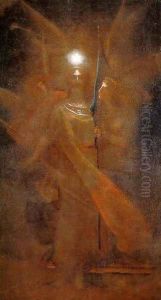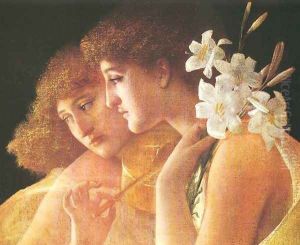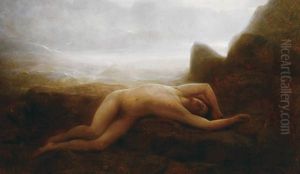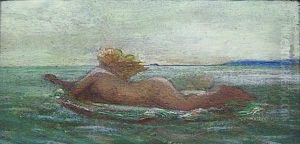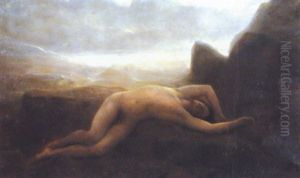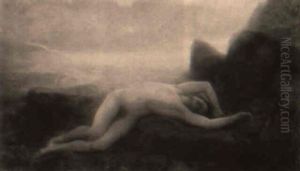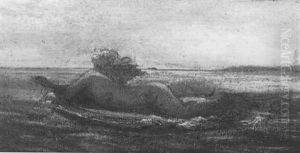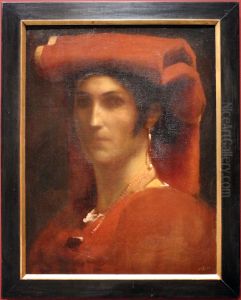Charles Sellier Paintings
Charles Frédéric Sellier, often known as Charles Sellier, was a French academic painter born on December 1, 1830, in Nancy, France, and died on February 12, 1882, in Paris. He is primarily known for his religious compositions, which reflected the academic art style of the period.
Sellier grew up in an era that valued traditional academic training in the arts, which he received at the École des Beaux-Arts in Paris, under the tutelage of eminent artists such as Léon Cogniet. He was a devout Catholic, and this faith greatly influenced his work, leading him to specialize in Christian-themed art. His paintings often depicted scenes from the Bible, the lives of saints, and the Virgin Mary, characterized by their serene and idealized representation of religious figures.
In 1857, Sellier gained significant recognition when he won the prestigious Prix de Rome for his painting 'Clélie passant le Tibre' (Cloelia Crossing the Tiber). This award granted him a scholarship to study at the French Academy in Rome, where he spent several years honing his skills and studying classical art and Renaissance masters, which further shaped his artistic style.
Upon his return to France, Sellier became an active participant in the Paris Salon, the official art exhibition of the Académie des Beaux-Arts in Paris. His works were well-received, and he accrued a reputation for his meticulous technique and the spiritual quality of his paintings. One of his most notable works is 'The Apparition of the Virgin to the Shepherdess of La Salette', which reflects the apparition event recognized by the Catholic Church. This painting exemplifies his ability to convey mystical experiences with emotional depth and sensitivity.
Sellier's art was emblematic of the 19th-century religious art movement in France, which sought to reaffirm the Catholic faith through art in the face of rising secularism. He continued to work and exhibit throughout his career until his death in Paris at the relatively young age of 51. Although not as widely remembered as some of his contemporaries, his contributions to religious art in the 19th century remain significant, and his works can be found in various churches and private collections.
